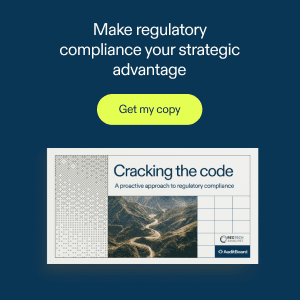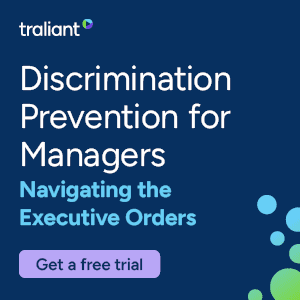Last month, California enacted legislation providing greater authority to Cal/OSHA in terms of COVID-19 mitigation efforts. Husch Blackwell’s Donna Pryor highlights AB 685 and explains what it will mean for employers.
On September 17, 2020, California Governor Gavin Newsom signed into law AB 685, effective January 1, 2021 through January 1, 2023. The law authorizes the Division of Occupational Safety and Health of California (Cal/OSHA) to determine that an exposure to COVID-19 at the workplace constitutes an imminent hazard to employees, to prohibit entry into and operations of the business in the immediate area in which the hazard exists and to require private and public employers informed of a potential COVID-19 exposure or infection among its workforce to comply with notice and reporting requirements. The law’s stated objective is to enable workers, agencies and the public to collectively minimize the risk of transmission of COVID-19 in the workplace. Cal/OHSA has published guidelines for employers to assist in compliance.
What is Considered Notice of a Potential Exposure?
Individuals at the workplace who present a risk of infection of COVID-19 that potentially exposes other workers are considered “qualifying individuals” if they have:
- Confirmation by a laboratory that they are positive for COVID-19;
- A positive COVID-19 diagnosis from a licensed health care provider;
- A COVID-19 order to isolate issued by a public health official; or
- Died from COVID-19 as determined by either the County Health Department or as indicated by COVID-19 county statistics.
An employer is considered to have received notice of a potential COVID-19 exposure at the workplace when it receives one of the following notices:
- From a public health official or licensed medical professional that an employee is a qualifying individual;
- From an employee or their emergency contact that the employee is a qualifying individual;
- Through an employer’s testing protocol that an employee is a qualifying individual; or
- To an employer or representative that a subcontracted employee is a qualifying individual.
What Are Employers’ Notice and Reporting Obligations Under AB 685?
To Employees and Employers of Subcontracted Employees
If an employer or its representative receives notice of a potential COVID-19 exposure among its workforce, it must provide written notice of the exposure to all employees and employers of subcontracted employees who were on the premises at the same time as the exposed worker. The notice must be provided within one business day of the employer’s receipt of notice of the potential exposure and must comply with the following requirements:
- Be provided in writing in the English language and in the language understood by the majority of employees;
- Inform the recipients that they may have been exposed to COVID-19;
- Be delivered in the manner normally used to communicate employment-related information, which may include text messages or email;
- Contain information regarding all benefits to which workers may be entitled as a result of the exposure under company policies, as well as federal, state and local laws, including workers’ compensation benefits, leave benefits and anti-retaliation and anti-discrimination protections; and
- Identify the disinfection and safety measures the employer will take in response to the potential exposure at the worksite as recommended by the Centers for Disease Control and Prevention.
To Exclusive Representatives
The exclusive representative of employees, if applicable, also is entitled to notice of a COVID-19 potential exposure within one business day of the employer’s receipt of notice of a potential exposure. The notice must contain the information required in the Cal/OSHA Form 300 injury and illness log unless the information is inapplicable or unknown to the employer.
To Public Health Agencies
In addition, employers must notify public health agencies of a workplace outbreak of COVID-19. An outbreak is defined as three or more laboratory-confirmed cases of COVID-19 within a two-week period among employees who live in different households. Notice to the public health agencies must be provided within 48 hours of the time the employer becomes aware of the outbreak. Employers are required to continue to provide notice of additional cases to the public health authorities of subsequent laboratory-confirmed cases at the worksite. The information required to be reported by employers will be available on the California Department of Public Health website to enable number and frequency tracking of COVID-19 outbreaks by industry. Personally identifiable employee information shall not be posted or made public. Notice to public health agencies is not required of health facilities as defined in §1250 of the Health and Safety Code.
What Enforcement Authority Does Cal/OSHA Have Under AB 685?
AB 685 permits Cal/OSHA to require posting of the notice of the imminent hazard at the worksite in a conspicuous location and permits the issuance of orders prohibiting use “to shut down a worksite or a specific work area that exposes employees to an imminent hazard related to COVID-19.” It’s important to note that AB 685 restricts prohibitions from “materially interrupting the performance of critical governmental functions essential to ensuring public health and safety functions or the delivery of electrical power and water.”
AB 685 further allows Cal/OSHA to act swiftly if Cal/OSHA determines that circumstances surrounding the exposure constitute a serious violation, defined as a realistic possibility of death or serious bodily harm arising from the hazard that is created by the violation present. Typically, to establish a rebuttable presumption that a serious violation exists, Cal/OSHA must provide to employers at least 15 days prior to issuing the citation a pre-citation notice containing the alleged violation descriptions and soliciting mitigating facts from the employer. AB 685 exempts a citation for a serious violation related to COVID-19 from the pre-citation form requirement. According to Cal/OSHA guidelines, AB 685 removed the negative inference that results from Cal/OSHA not sending a pre-citation notice to the employer for a COVID-19-related violation.
What This Means for You
The designation of COVID-19 as an imminent hazard under Cal/OSHA regulation subjects employers to fines for violations that result in an increase in the COVID-19 exposure risk to employees. California employers should take the following steps to comply with AB 685:
- Adopt a plan and procedures recommended by federal, state and local health authorities to prevent and mitigate the spread of COVID-19 in the workplace;
- Communicate with employees the procedures for providing notice of a potential exposure to the employer and designate an individual responsible for receiving employee reports;
- Maintain the confidentiality of employees’ medical information;
- Maintain all records of potential exposures to COVID-19 for a period of three years;
- Be prepared to provide the required one-day notice to all parties entitled to such notice under AB 685, as well as to public health agencies in the event of an outbreak; and
- In the event of an exposure, adopt disinfectant and safety procedures and develop and train a group of personnel responsible for safely implementing those procedures.



 Donna Pryor is a Denver-based partner with the law firm
Donna Pryor is a Denver-based partner with the law firm 







